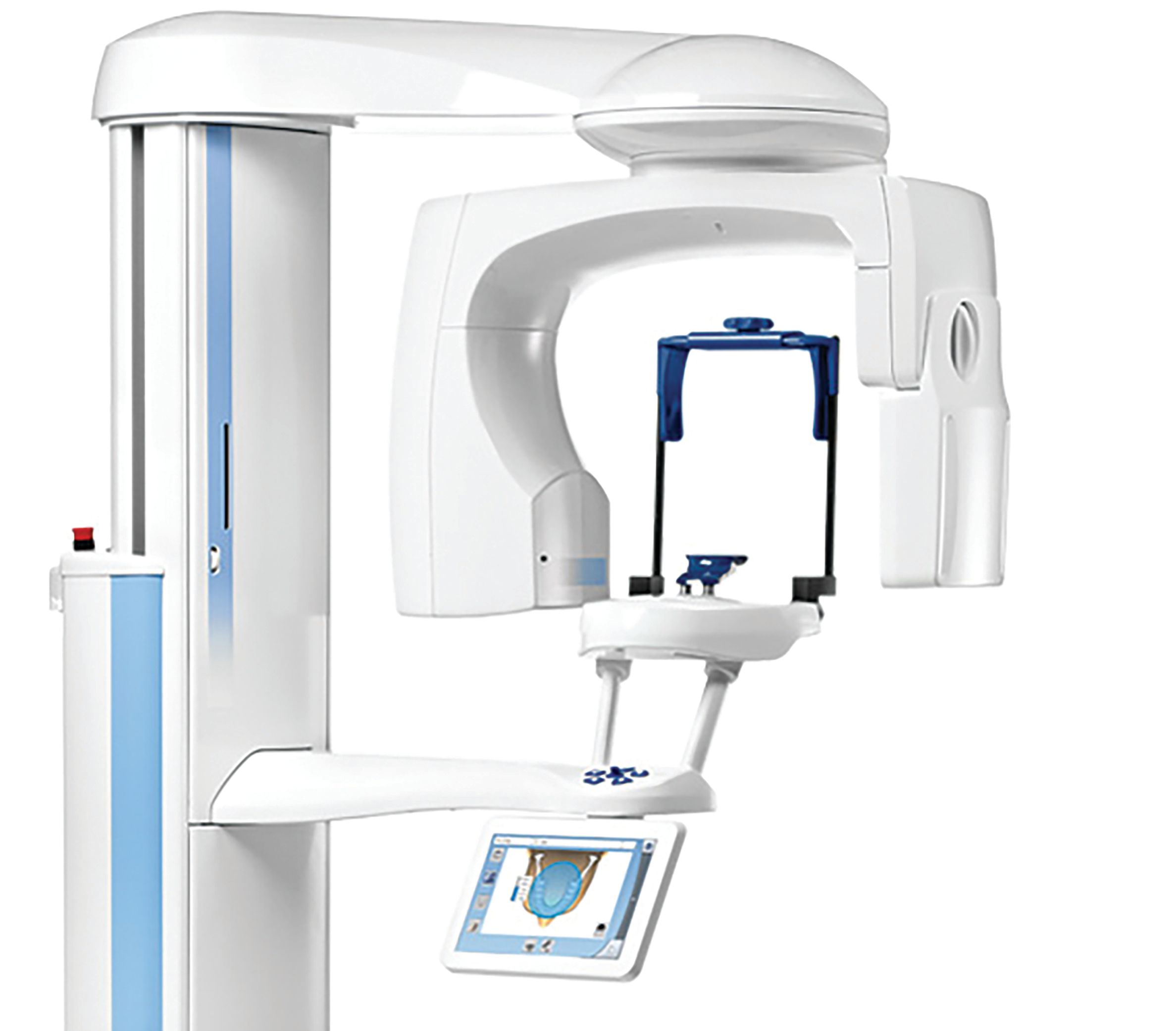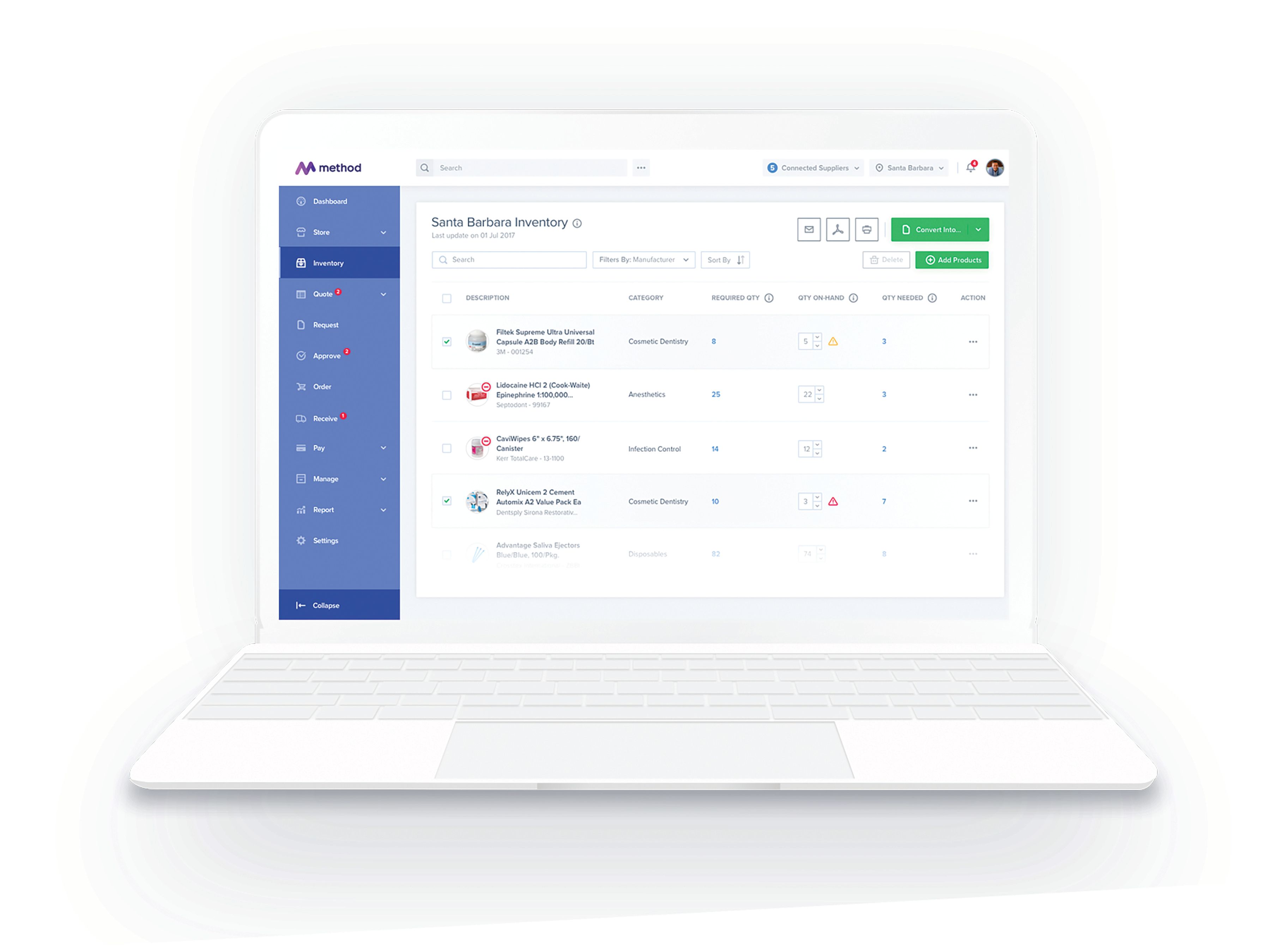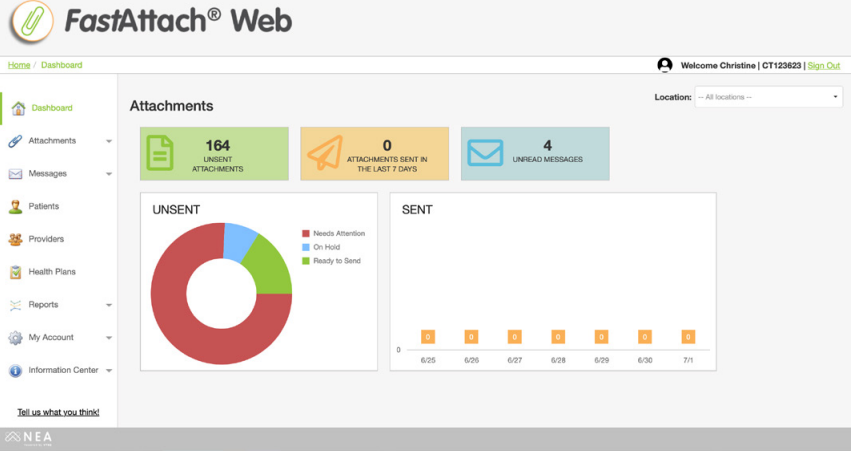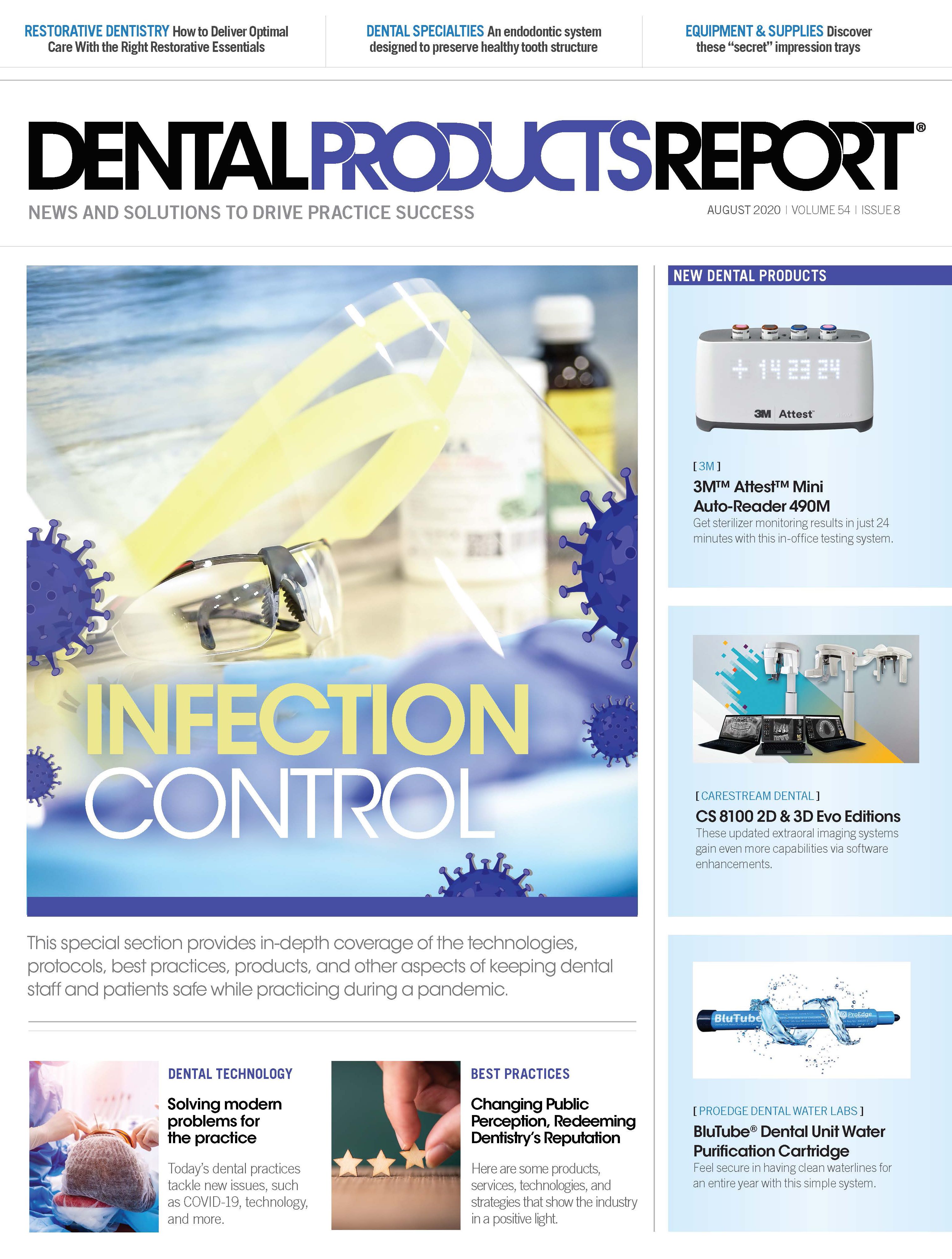Solving modern problems for the practice
Today’s dental practices tackle new issues, such as COVID-19, technology, and more.
© Vadim / stock.adobe.com

It’s no secret that dental practices are not perfect. Some practices had issues before the shutdown for coronavirus disease 2019, while other issues are emerging as practices reopen. However, these are not the same problems dentists had 15, 10, or even 5 years ago. These are the modern kind.
What’s the Problem?
Technology brought in to resolve issues is often a source of modern problems. For example, software innovations have revolutionized numerous challenges in a practice. However, as Jeremy Krell, DMD, MBA, head of marketing at Simplifeye and vice president of business development for Supply Clinic, points out, these platforms do not always work together, resulting in fragmented solutions that don’t talk to each other, so the practice must run multiple platforms at any given time.
“It’s very laborious,” Krell says. “It’s not seamless.”
COVID-19 has made streamlining the payment process a priority for practices, according to Krell. A patient might make several stops at the front desk to check in with insurance, confirm coverage, pay bills, and other business.
“It’s a very high-contact situation, which is both a bad consumer experience and, in the world of COVID-19, far from contact-free,” Krell says. Having a synchronized retail payment process could help reduce face-to-face contact.
COVID-19 also affects practices’ cash flow, according to Robert Patrick, president of Vyne, a health care technology company. Optimizing business operations is critical to owning a dental practice, Patrick says. Not being able to consistently identify a patient’s responsibility prevents the patient from paying in advance. This also delivers an uncertain patient experience, which is not in line with patient expectations.
“We are in an Amazon, cost-comparison world. The patient just agreeing to whatever treatment the dentist might say the patient needs is an interaction that is evolving,” Patrick says. “Being as accurate and confident about the patient’s responsibility will help the patient be more comfortable.”
Dentists’ expectations of themselves have evolved, as well. Ken Wright, DDS, and Robert Wertke, DMD, work together in a private practice in Barrington, Illinois. As education platforms and communications improve, it raises the dentists’ expectations of what they feel they’re capable of, Wright says. Doing more also increases dentists’ need for technology and the modern problems that come with it.“
You have less time to not only bring them up to speed on what they need as a patient, but also to gain their trust and help them understand what their oral health picture looks like.”
— Robert Wertke, DMD
One of the problems I’ve had is you pick a particular route, and invariably there’s an upgrade or a software patch or an equipment need, and all these things don’t always coordinate at the same time,” Wright says. “You can see the goal, but then getting to the goal and staying in the groove is becoming exceedingly difficult.”
Patients expect fast results and expect to dedicate less time to the process, Wertke adds. Furthermore, patients may have preconceived notions about what they want from using online searches without understanding dentistry’s nuances.
“So, you have less time to not only bring them up to speed on what they need as a patient but also to gain their trust and help them understand what their oral health picture looks like,” Wertke says.
Looking at the bigger picture, the industry itself can be problematic, according to Scott Drucker, DMD, MS, cofounder and president of Supply Clinic. In the past, practices have relied on sales representatives for new product information, something that may be keeping practices from adapting to an e-commerce model. Now, he says, dissemination of information is faster via the internet.
“There is an inherent, misaligned incentive when the sales representative makes a commission off of the supplies sold. Put simply, a lower cost of supplies translates to a lower sales rep commission,” Drucker says.
Carestream Dental’s CS 8100 is a 3D external imaging system that allows dentists to perform more procedures in-house.

The pandemic necessitated reducing the number of people in a practice at any given time. It also brought to light some broken parts of the supply chain, especially the availability of personal protective equipment (PPE). Drucker believes these factors will encourage practices to find new ways to buy supplies.
“We are going to see this huge surge in the direction of online shopping behavior,” Drucker says.
The method used to purchase supplies isn’t the only significant change caused by COVID-19. Working chairside looks different, too, as patients are hypersensitive about hygiene, according to Edward Shellard, DMD, chief dental officer at Carestream Dental. Patients are demanding that practices go above and beyond their usual strict infection control protocols with enhanced PPE. In addition, as practices reopen, dentists have a backlog of patients who put off preventative care.
The ProMax 3D Plus from Planmeca offers seamless integration and relieves issues with 2D diagnostic images.

“We need to be prepared to see patients with issues that may have started small, but grew over the course of the quarantine,” Shellard says.
Patients also expect the same level of comfort and convenience that digital technology affords them in their everyday lives, Shellard says. Carestream Dental’s 2019 Global Digital Dentistry Survey found that 2 out of 3 patients would consider switching to a practice that uses more advanced technology.1
COVID-19 also brought to the forefront the challenges many dentists face with the business side of the practice. A number of dentists struggle with maintaining a healthy bottom line, and in many cases may not have the business expertise or the time to optimize it, says Dan Traub, vice president of product at Method Procurement. Additionally, some dentists may not know the opportunities available for savings, as many aren’t leveraging modern technology and best practices when they’re buying goods and services. Traub says it often happens because they have not put suppliers through a competitive process, often favoring a supplier relationship over their own financial interests.
There is an inherent, misaligned incentive when the sales representative makes a commission off of the supplies sold. A lower cost of supplies translates to a lower commission.”
—Scott Drucker, DMD, MS
President, Supply Clinic
“As a business owner, you want to foster good relationships with suppliers. Those are valuable partnerships, which often bring other services to the table,” Traub says. “But the caution is that you must maintain awareness of the pricing they offer you relative to the market. Not surprisingly, prices tend to creep up over time. You have to be aware of what that is doing to your bottom line and hold suppliers accountable.”
The pandemic also revealed the importance of secure access to patient data for dentists working from home. David Gane, DDS, a general dentist in Vancouver, British Columbia, and CEO of Apteryx Imaging, says access to patient image data is crucial. However, recent ransomware and highly publicized malware cyberattacks of dental offices have made patients wary of having their personal health information (PHI) stolen, and practices are concerned about getting locked out of their data and the potential HIPAA violation that follows.
On the clinical side, Gane says missing caries on radiographs is not uncommon, with an error rate as high as 20% in some busy practices. Also, oral cancers and other cancerous lesions are on the rise, not only because of alcohol and tobacco use, but also because of the human papillomavirus, and can be overlooked.
“It’s incumbent on dentists today to screen for dental diseases using adjunctive devices that enhance visualization,” Gane says.
Possible Solutions
The good news is many products, services, software, technologies, and more are available to fix these challenges.
Krell says Simplifeye wraps four major services together like “a virtual front desk or virtual practice in a box.” It also addresses the fragmentation prevalent in dental practice software.
“It provides a live chat that talks to its scheduling feature and talks to its telehealth feature and talks to its payments feature. Now you have this 4-pronged solution that all ties back to one central place,” Krell says.
Simplifeye also addresses the need for a retail health care experience with Payments. Patients can pay online with payment information stored by the credit card processor Stripe. Payment information is digitized and tokenized with payment plans you can customize. There are no merchant fees for providers.
“It takes away additional stops at the front desk and modernizes the payments system,” Krell says.
XVWeb from Apteryx Imaging is a cloud subscription service that provides direct capture from most imaging devices and 24/7 accessibility to data from any web-enabled device.

Being accurate and confident from a business standpoint requires better tools for revenue cycle management. NEA Powered by Vyne and its HITRUST CSF Certified FastAttach, a dental clearinghouse and dental claims and attachment solution, can decrease the reimbursement cycle significantly and create cash flow for small business owners. With connections to all the major payers in dentistry, Patrick says users can be confident no matter what payer it is, and they will receive improved reimbursement response. The system works with many different practice management solutions.
“It gives our practices centralized, easy workflow to interact with,” Patrick says.
Also, Vyne Connect, a secure email solution, helps practices communicate securely with anyone through encrypted email.
“It gives practices the ability to share PHI with referring doctors and the ability to communicate with patients securely,” Patrick says.
Supply Clinic is Drucker’s answer to the need for a comprehensive and intuitive e-commerce solution for dental practices. It is a marketplace platform in which multiple sellers can list their offerings for the same products. The platform allows for transparent pricing. Buyers can pull up a single product page for the SKU and see who sells it, price, shipping locations, and approximate shipping times. Practices can also purchase products from multiple sellers in a single shopping cart and checkout.
Method Procurement is a subscription software provider that offers budgeting support and features a cost-comparison tool to allow practices to shop from different suppliers.

“Our goal is to make available as much information as possible to the customer so that they can make an informed purchase decision,” Drucker says.
Digital technology provides essential data dental professionals need to make better decisions for their patients. Shellard says general practitioners can use a compact, easy-to-use system for 3D imaging, such as the CS 8100 3D extraoral imaging system. 3D imaging allows dentists to offer more procedures, such as implants, in-house.
Shellard also likes the CS 9600 CBCT system, which uses the latest smart technology and artificial intelligence (AI) to reduce the need for retakes and make recall appointments more efficient. Advanced software algorithms called CS MAR decrease the scatter caused by metal artifacts, so dentists make more confident diagnoses, improving patient outcomes. Intraoral scanners such as the CS 3600 or CS 3700 increase comfort for patients and allow dentists to plan implants, restorations, or clear aligners virtually.
“Clinical can also merge with practice management thanks to new teledentistry options that practices can add to their hosted management solutions,” Shellard says.
Wright and Wertke use the Planmeca ProMax 3D Plus, which checks their boxes for support and seamless integration, plus patient education opportunities. It also relieves diagnostic dilemmas they may have had in the past with 2D images.
“With the CBCT, I see things I would never have seen or contemplated,” Wright says. “It’s phenomenal technology.”
Using integrated technology, Wertke says, dentists can establish an information-gathering first appointment. Using imaging technology, dentists can show patients what they see, and educate them on their overall oral health and related treatment plans. To a certain extent, Wertke says, patients can diagnose themselves.
“It is one thing for me to say they have three or four cavities and other things going on in their mouth. It’s another for me to put it on a screen and let them look,” Wertke says.
Method Procurement is a subscription software provider that has built its purchasing system around the comprehensive needs of a dental practice. It features a cost-comparison tool that allows users to shop from different suppliers. Additionally, the tool provides approval and budgeting support, inventory management, and tight tracking of all steps in the buying and paying cycle. Traub, who has worked in procurement for nearly 20 years for all types of industries, says a fundamental core of the platform is the catalog, which has 400,000 dental products from 2,000 suppliers.
“If you want to know who sells a particular bonding agent, we have that in the platform, along with pricing and, in many cases, the stock availability," Traub says.
“The catalog that we’ve assembled also includes a private label product cross-reference, which we believe is the first in the industry.”
Traub says the mission of Method Procurement is to educate the industry about procurement as the key to improved financial results for practices of any size. The techniques embedded in the tool frequently produce remarkable savings, Traub says. Traub wants dentists to recognize that procurement is a process in need of standardization and deserving of their attention.
Make sure what you’re purchasing can integrate into a larger workflow so you can build the solution set that meets your needs.”
—Edward Shellard, DMD
Carestream Dental
“Our solution helps practices finally be proactive about managing non-payroll expenses, a problem we see frequently discussed but rarely addressed,” Traub says. “We’re taking proven techniques from other industries, and we are helping to push the dental industry forward and modernize their approach to these challenges.”
XVWeb, a true cloud subscription imaging service, provides a full imaging application that provides direct capture from most imaging devices and provides 24/7 accessibility to data from any web-enabled device.
“Many practices appreciate how it integrates with most practice management software, reduces hardware footprint and related [information technology] costs, and includes updates and support,” Gane says.
XVWeb also facilitates HIPAA-compliant image sharing and manages backup and security.
“Interestingly, of the millions of patient records exposed in medical and dental imaging breaches during the first half of last year, none were cloud-based,” Gane says.
Apteryx also is incorporating machine learning and AI for decision support into the XVWeb product. Gane says they chose decision support because dentists have a high level of agreement variability on caries diagnoses for many reasons, and because caries detection inherent in bite-wing radiographs is low.
“The AI, in my mind, is best at providing decision support to draw attention to enamel and dentin that could be carious and let dentists make the final diagnosis as they’ve always done,” Gane says.
FastAttach from NEA Powered by Vyne is a HITRUST CSF Certified dental claims and attachment solution that reportedly decreases the reimbursement cycle.

The VELscope VX Oral Assessment System from Apteryx uses a filtered blue-spectrum light to stimulate natural fluorescence to enhance visualization and help detect abnormal mucosal tissue early.
“Healthy tissue fluoresces a bright green, and tissues that appears as dark regions could be indicative of a problem,” Gane says.
Choosing a Solutions Partner
When it comes to choosing a solutions partner, there are many considerations for a dentist.
“I would encourage dentists to think about what’s going to work [well] with the other systems that you have running, what can be implemented overnight, and what your staff is going to use,” Krell says. “You have to put that level of realism around your choice.”
Choosing a technology company that is well-established, keen on maintaining the product line, and invested in research and development is also essential, Wright says.
“It’s a big investment,” Wright says, regarding choosing Planmeca for his CBCT technology. “You want to have them as a partner for a long time.”
“My advice to people buying technology,” Gane adds, “is it’s better to overpay for something that works than to pay anything for something that doesn’t work or isn’t proven. We need tools that really work and work well.”
“Choose systems that fit you and don’t force you to change your workflow to adapt to them,” Shellard says regarding choosing solutions for the practice. “Make sure whatever you’re purchasing, whether it’s software, a scanner, or a 2D/3D imaging system, can integrate into a larger workflow so you can choose and build the solution set that meets your practice’s needs today and in the future.”
Simplifeye Connect is a HIPAA-compliant, mobile-friendly telehealth platform that integrates with Amplify, a 24/7 live chat platform.

Drucker feels it is essential for all practices to consider new ways to purchase supplies.
“Everybody right now has maximum quantities allowable for certain supplies,” Drucker says. “So, my general piece of advice is to expand your network of companies through which you can buy supplies.”
“There are other providers out there that can buy office supplies and so forth,” Traub says. “But they are not going to have a deep understanding of dental distributors, dental suppliers, and the dental supplies themselves. That sets [Method Procurement] apart.”
Patrick says it is essential for dentists to understand where they are getting their money and how it affects the revenue cycle management of their office.
“My overall advice would be to become an educated consumer,” Patrick says. “If you’re an educated consumer with these services, it will help you make a better decision for your business.”
References
1. The Need for Digital Dentistry Education. Carestream Dental. Published February 2020. Accessed June 2020. https://www.carestreamdental.com/globalassets/microsites/digital-dentistry/assets/the-need-for-digital-dentistry-education.pdf
